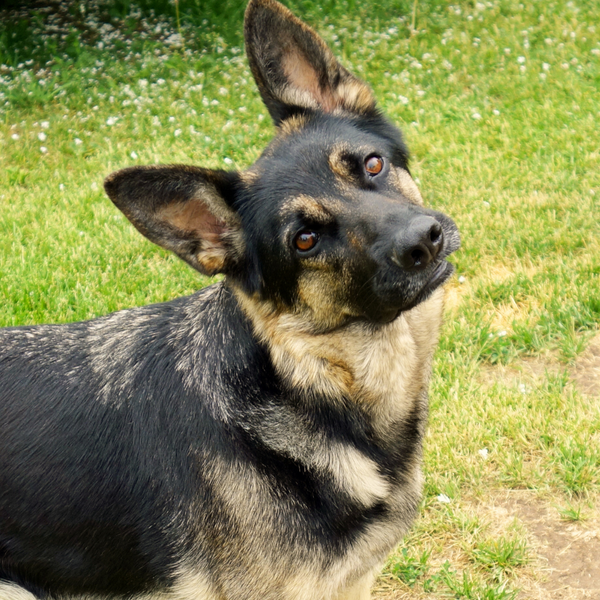
Pets and Human Speech - What Do They Really Understand?
(Dr. Iulia Mihai, DVM) Everyone talks to their pets! However, have you ever wondered what your dog or cat actually understands when you speak to them? Do they really understand what we say to them, or do they simply interpret the tone of our voice when we speak those words to them? Anecdotally, many pet owners are convinced that their pets can understand them. Maybe you do too!
Although it is most likely the second above alternative, studies show that pets can still understand some words that people use. In fact, it was discovered that dogs have different thinking patterns when they hear words they have heard before than when they hear new words.
Currently, there is not enough evidence and scientific publications to prove that pets really understand the words we say to them. Pets can clearly learn verbal commands, but the level of comprehension of the context and other non-command words is unknown. Research shows that they can recognize some words and the tone of our voice.
Can Animals Learn Human Speech?
Speech is a defining feature of what makes us human. Human language is complex and involves the coordination of several parts of the body, such as lips, tongue, vocal cords, and brain. Therefore, animals cannot learn and use human speech because their physiology is different. Some birds can imitate human words or sounds and even have limited conversations, but this does not prove that they understand what they are saying.
Primates (chimpanzees and bonobos) can learn a limited number of signs, as shown by studies conducted to determine whether these animals can learn symbolic systems and sign language. However, primates were not capable of using human language efficiently.
How Do Dogs Perceive Language?
As we mentioned in the beginning, most pet owners are convinced that their furry friend understands everything that is said to them. Dogs seem to understand words like "wait" - you will tell them to wait, and they will wait - or "let's go for a walk", and they will go by the door waiting for you to put the collar and leash on. However, dogs learn from a young age to associate words with certain actions or objects. For example, when they see their collar, they will know you are going to take them for a walk. When you show them their food, they will know it's meal time.
The information that "tells" dogs what actions to take after the words we use comes from the tone of our voice and our body language. As a result, they follow our facial and body movements and our posture to determine what we want them to do or not. In other words, dogs collect all this information to understand what action we want them to take.
Therefore, there are very high chances that if you say in an enthusiastic tone "Who's a good boy or girl", your dog will also get excited and wag their tail with joy. But if you say the same words in a negative tone, frowning, and with a body position that denotes upset or anger, it is more likely that your dog will understand that you are scolding them. It has also been shown that dogs have a cognitive ability like that of a 6-12-month-old child, which means that they can quickly understand what "no" means when they do something that we dislike.
There are noted instances and studied cases of demonstrated vocabulary in dogs. Betsy was a border collie that knew around 340 words. Another border collie, Rico, knew more than 200 objects that he could bring on demand. Chaser, another border collie, knew 1022 words. In addition, Chaser was able, through elimination, to deduce the toy she was asked to look for, even though she had never seen it before. Another dog, Bailey, a Yorkshire, knew the names of 120 toys.
Although some dogs are considered super intelligent as was the case with Chaser, the majority understand an average of about 89 words, according to Dalhousie University, Canada.
Regarding cats, it seems that they can understand between 20 and 50 words on average. However, cats associate words with body language and tone of voice rather than understanding their meaning.
Which Dog Breeds Learn and Understand Words Faster?
It seems that shepherd dogs are able to understand and respond to the most words and phrases. Shepherd dogs include:
- Australian Shepherd
- Border Collie
- Australian Welsh Corgi
- Scottish Shetland Shepherd
However, it seems that other dog breeds could understand more words than most:
- Chihuahua
- Bichon Frise
- Cavalier King Charles Spaniel
Do Dogs and Cats Really Understand What We Say?
As far as dogs are concerned, a study conducted on 12 dogs of different breeds showed that they can identify some of the words we speak. All the dogs had been trained by their owners in advance to distinguish between two objects and to bring one of the objects when asked. The dogs were connected to an fMRI (functional MRI) scanner. In order to be able to stay still in the fMRI scanner, the dogs were trained months before the actual start of the study. During the scanning, the dog owners were asked to say the names of words their pets knew and words they did not know. The dogs were also shown objects, known or unknown.
The result of the study shows that dogs had a higher brain activity when they were told or shown new words or objects. In humans, it is the opposite; we have a higher brain activity when we hear or see familiar things. Researchers believe that this happens because dogs want to please their owners, so they try to understand what they are saying. In other words, dogs are more attentive when they hear new words because they want to decipher what their owners are trying to tell them.
Regarding cats, the researchers noted that they respond with orientation behavior (moving their ears and head) when they hear their name, regardless of whether it was called by their owner or a stranger. It is normal for cats to respond when they hear their name because they associate it with something positive (most of the time, we call our cats to play with them, pet them, or give them food - all of which are positive things for a cat). In this study, when neutral nouns were used, cats had no reaction because they did not bring them any benefit or punishment (i.e., cats do not associate neutral nouns with anything positive or negative). The study demonstrates that cats learn and associatively interpret words that result in a reward or punishment. Although it seems that cats are just as good at learning as dogs, they are not so eager to please their owners.
Conclusion
It's hard to tell if our beloved pets really understand what we're saying or not. But as the studies show, it seems that they understand some words. Cats understand some words because they associate them with something positive or negative. Dogs understand an average of 89 words, but there are examples of dogs knowing hundreds of words. Both dogs and cats understand what we say to them through our tone of voice and body language. They do not understand the exact meaning of the words we say.
Iuliana graduated from the University of Agronomical Sciences and Veterinary Medicine in 2012, Romania. She has a Master’s degree in Small Animal and Equines Pathology and a strong affinity for Veterinary Parasitology and Laboratory. In 2013 she started her Ph.D. in epithelial cancer in dogs and cats. She volunteered at the faculty’s clinic in her 3rd year of study, and continued her career in small animal pathology and laboratory. She has one cat and eleven rats. Her interests outside of work include traveling, writing, and crafting.

Post a Comment!